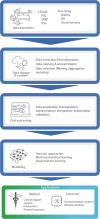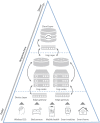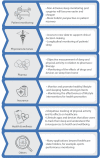The future of sleep health: a data-driven revolution in sleep science and medicine
- PMID: 32219183
- PMCID: PMC7089984
- DOI: 10.1038/s41746-020-0244-4
The future of sleep health: a data-driven revolution in sleep science and medicine
Abstract
In recent years, there has been a significant expansion in the development and use of multi-modal sensors and technologies to monitor physical activity, sleep and circadian rhythms. These developments make accurate sleep monitoring at scale a possibility for the first time. Vast amounts of multi-sensor data are being generated with potential applications ranging from large-scale epidemiological research linking sleep patterns to disease, to wellness applications, including the sleep coaching of individuals with chronic conditions. However, in order to realise the full potential of these technologies for individuals, medicine and research, several significant challenges must be overcome. There are important outstanding questions regarding performance evaluation, as well as data storage, curation, processing, integration, modelling and interpretation. Here, we leverage expertise across neuroscience, clinical medicine, bioengineering, electrical engineering, epidemiology, computer science, mHealth and human-computer interaction to discuss the digitisation of sleep from a inter-disciplinary perspective. We introduce the state-of-the-art in sleep-monitoring technologies, and discuss the opportunities and challenges from data acquisition to the eventual application of insights in clinical and consumer settings. Further, we explore the strengths and limitations of current and emerging sensing methods with a particular focus on novel data-driven technologies, such as Artificial Intelligence.
Keywords: Biomedical engineering; Diagnostic markers; Predictive markers; Preventive medicine; Sleep.
© The Author(s) 2020.
Conflict of interest statement
Competing interestsL.F. is a shareholder of Salumedia, a digital health company that provides mHealth solutions for patient empowerment. The remaining authors declare no competing interests.
Figures







References
Publication types
Grants and funding
LinkOut - more resources
Full Text Sources
Medical

